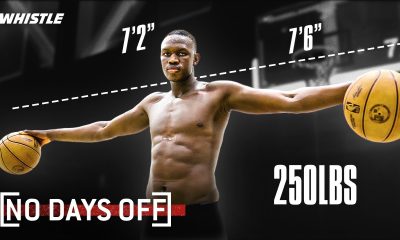NIL
Student project


If you’ve had the chance to attend a high school sporting event, you likely have been met by athletes working hard with the shared goal of victory in their sport.This is because of NIL, or name, image, and likeness. It grants college, and in some other states high school, athletes the right to profit from their personal brand.It wasn’t until July of 2021 that the NCAA altered its rules to allow college students to profit from NILdeals, yet this decision had a grand and almost immediate impact across the nation.“Whatever we do moving forward, it will include discussion on this issue with our school administrators, Board of Directors, staff and leaders of other state high school athletic associations,” Ute said.
Although it is not in Ohio, Williams believes that the existence of NIL in itself is not an issue. He believes that social media’s significance in NIL and sports culture as a whole, however, is a “double edged sword.”
What does NIL mean for high school athletes?
In May 2022, an NIL proposal was put forth by the Ohio High School Athletic Association, but it failed by a margin of 538 to 254 in a vote by member schools.
Despite this, Williams is supportive of the opportunity NIL can create for high school athletes.Williams feels that while social media helps with outreach and shines light on the overlooked or undermined characteristics in an athlete such as hard work, dedication, passion, and immersion into their sport, with the prominence of social media in the lives of children and adults alike, athletes have become aware of the capabilities of social media and have been taking advantage of them.
Soon after, one by one, different states began changing their rules, allowing high school athletes to benefit from their NIL as well.Shawn Williams Jr. is the head coach of the Centennial High School boys basketball team, and the head coach of the All-Ohio Red boys 16U AAU basketball team. He says that even he is noticing that NIL is gradually becoming more prevalent and impactful in the high school scene.
Will NIL ever be approved for Ohio high school students?
“Every year, the referendum voting process shows that our member schools have a voice in this democratic process,” said OHSAA Executive Director Doug Ute. “If NIL is going to enter the Ohio interscholastic landscape, we want the schools to be the ones to make that determination.”Ryan Holmes is a student at Centennial High School. This piece was written for Columbus Journalists in Training, a program sponsored by the Columbus Dispatch and Society of Professional Journalists Central Ohio Pro-Chapter and Columbus Association of Black Journalists for Columbus City Schools students. Ryan was a member of team Writer’s Block.Such has been shown through the gradual upsurge in instances of televised unsportsmanlike conduct in the form of athletes embarrassing one another and ultimately straying from the fundamental and core components of their sports, hungry for media attention.With so much momentum pushing toward NIL benefits being integrated into high school and college athletics, there is a possibility of it passing in the state of Ohio sooner rather than later. However, this decision will ultimately come down to the member schools.
This proposal would have allowed student athletes to sign endorsement agreements as long as their teams, schools and the OHSAA logo were not used, the endorsements did not happen on school property or in school uniform and provided there were no endorsements with companies that do not support the mission of education-based athletics, such as casinos, gambling, alcohol, drugs, and tobacco. To his point, 44 states permit high school athletes the monetization of their NIL, according to NCSA Sports. Ohio is not one of these states. Because the proposal was rejected, Ohio’s student-athletes remain unable to sign endorsement deals without losing their amateur status.What you cannot see in Ohio is them using their athletic talent or persona off the field to make money.
NIL
In a matter of one year, Cal and Stanford went all in on football
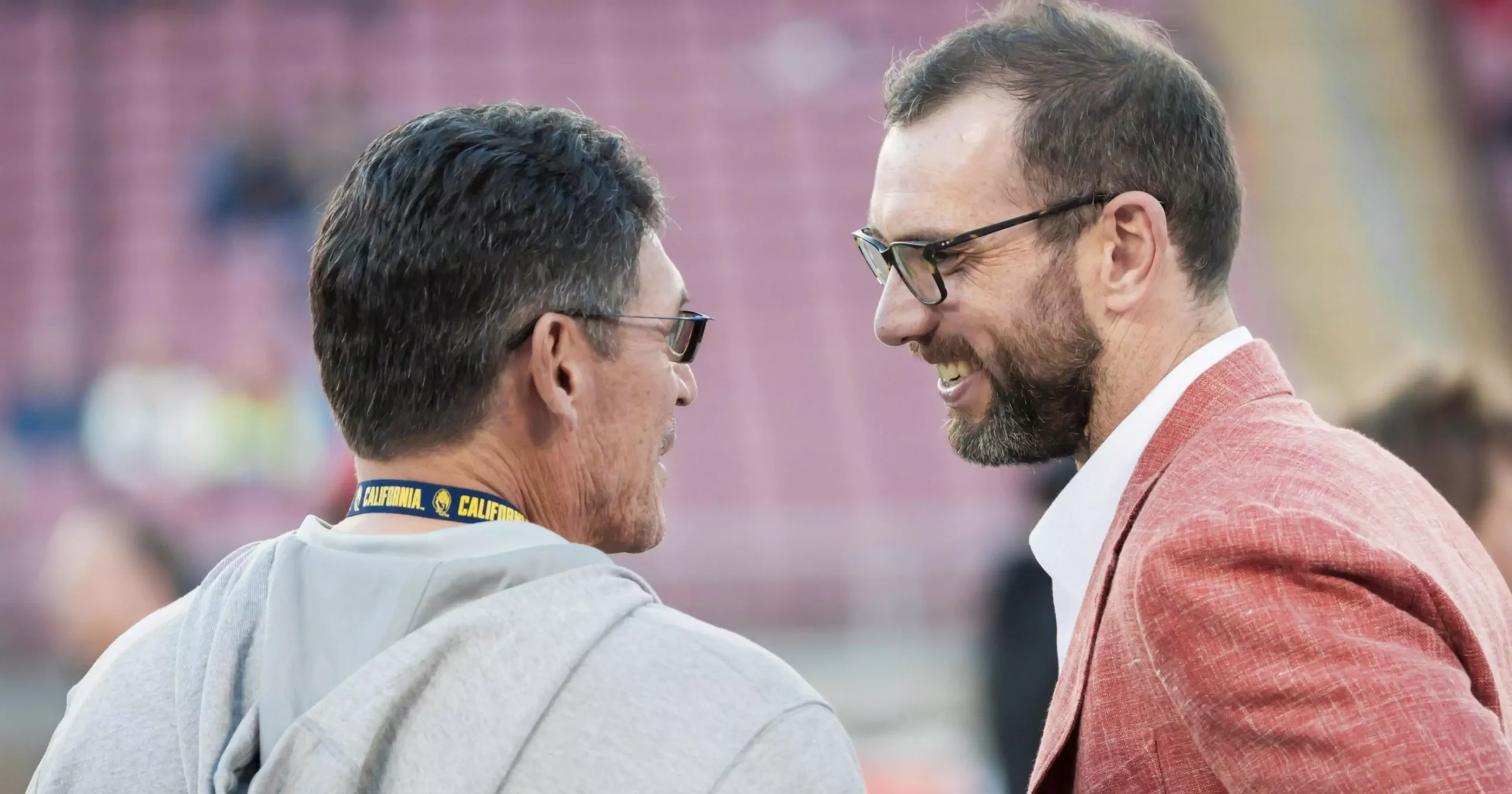
This piece originally appeared in our twice-weekly sports newsletter Section 415. Sign up for the newsletter here and subscribe to the Section 415 podcast wherever you listen.
It’s been a long time since there was genuine, sustained college football fever in the Bay Area, and when NIL collectives began paying student-athletes in 2021, it seemed as if Cal and Stanford’s programs might fade into obscurity.
The emergence of the transfer portal, a wild wave of conference realignment, and prolonged on-field struggles for both programs created the perfect storm for the new college football world to leave the Bay Area behind.
When the Pac-12 disintegrated, Cal and Stanford found a home in the ACC, but it seemed unrealistic to think the Bears and the Cardinal might compete for conference titles on the football field with the likes of Clemson and Miami.
So far, they haven’t.
2 days ago

5 days ago

Tuesday, Nov. 25

Cal’s seven regular-season wins in 2025 are its most since 2019. Stanford’s four wins this year are tied for its highest total since 2018.
The reality is a large percentage of graduates from both universities likely wouldn’t care if they stopped competing in football altogether. But despite the headwinds, Cal and Stanford are pressing forward, more determined than ever to compete in a sport in which the odds have historically been stacked against them.
Last November, Stanford hired two-time Heisman Trophy runner-up Andrew Luck to fill a newly created GM role. In March, Cal responded by bringing in former NFL head coach Ron Rivera to fill the same, first-of-its-kind position in Berkeley.
Both Luck and Rivera spent their first year on the job securing critical financial resources that can theoretically bankroll better rosters. They also spent recent weeks completing coaching searches and identifying new leaders for the Cardinal and the Bears.
On Tuesday, Luck sat at a podium in Palo Alto alongside former teammate Tavita Pritchard, a fellow Stanford quarterback who was introduced as the program’s new coach. Three days later, Rivera sat alongside former Cal defensive lineman Tosh Lupoi, a prolific recruiter who will take over the Bears after Justin Wilcox was fired during his ninth season as head coach.
Lupoi wasted no time getting to work. He left his introductory press conference, booked a ticket to Hawaii (opens in new tab), and spent two hours convincing freshman quarterback Jaron-Keawe Sagapolutele to stay in Berkeley next season.
Neither Pritchard nor Lupoi has ever been a head coach, but both have played and worked as assistants at their respective programs. Pritchard started under Jim Harbaugh and called plays under David Shaw while Lupoi played and coached under Jeff Tedford, teaming up with Aaron Rodgers, Marshawn Lynch, and DeSean Jackson.
Pritchard and Lupoi understand the challenges Stanford and Cal face as well as anyone. They’ve each recruited players to their alma maters but have never had the type of resources that are available to them now. Each coach reports to a GM who is dedicated to raising money, acquiring talent, and developing the infrastructure that will be necessary to keep building momentum if and when their programs do succeed.
Lupoi might not be the next Tedford, and Pritchard probably isn’t going to be the next Harbaugh, but give Cal and Stanford credit. At a time when they could easily fold and give up on football, both programs are making high-profile hires, significant investments, and public commitments to building better teams.
No one knows if any of this will work, but for both Cal and Stanford, it’s far better than standing on the sidelines.
NIL
ESPN analyst names two college football programs that should replace ‘wasted’ playoff spots
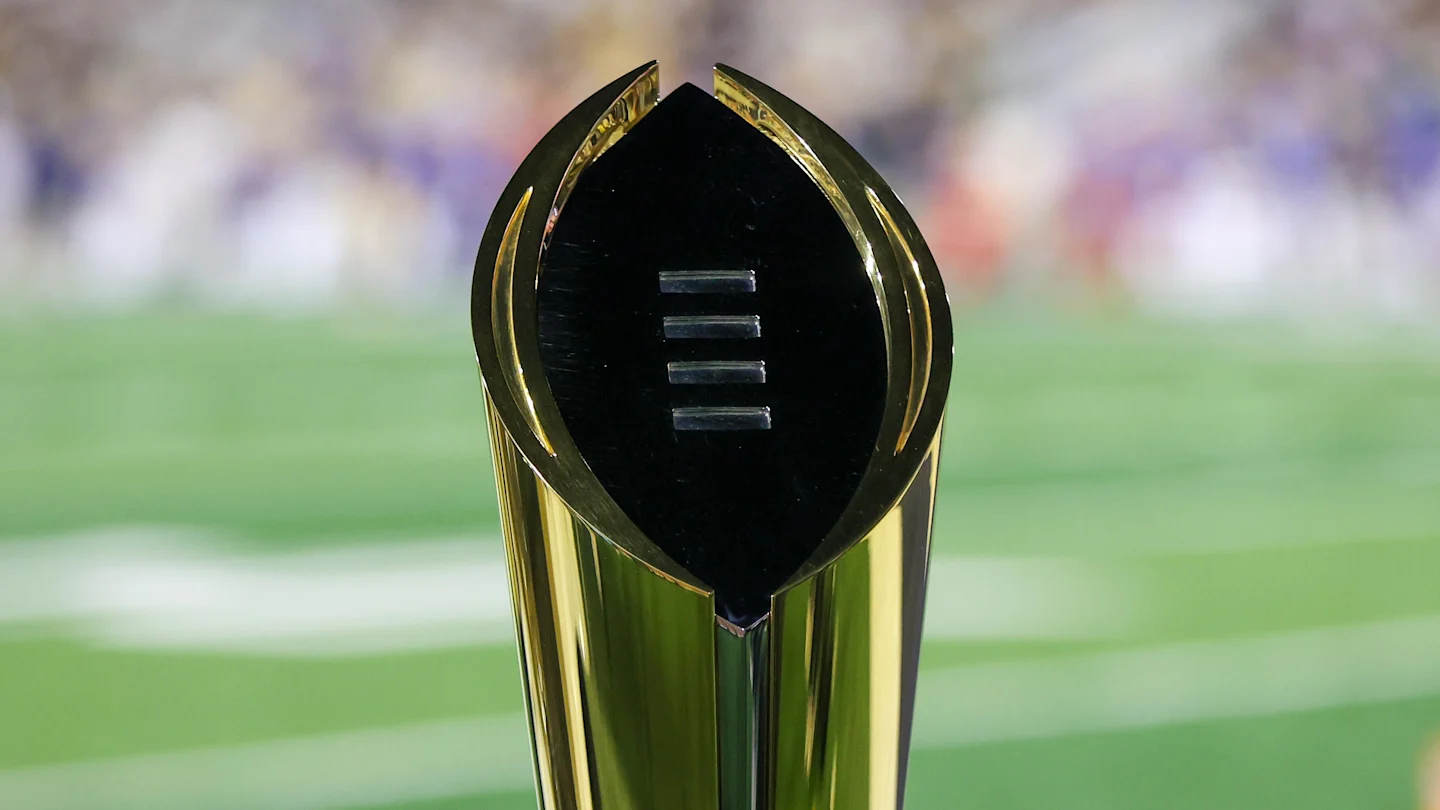
Monday morning brought the inevitable fallout from the College Football Playoff selection committee’s final bracket reveal. The inclusion of multiple teams from outside the major conferences has sparked fierce debate regarding the exclusion of arguably more talented rosters. On ESPN’s Get Up, the conversation turned heated regarding which teams truly deserved a chance to compete for a national title.
Analysts dissected the committee’s decision to favor conference champions from smaller leagues over battle-tested programs with higher talent ceilings. The argument centers on whether the playoff should feature the absolute best teams or simply adhere to a format that rewards access for all conferences.
One prominent voice on the network didn’t hold back his frustration with the current field composition. He argued that the presence of these smaller schools dilutes the quality of the postseason and robs viewers of high-stakes matchups between the sport’s biggest brands.
Dan Orlovsky Claims Committee Wasted Playoff Spots on Group of Five Teams
Former NFL quarterback Dan Orlovsky pointed directly at the Texas Longhorns and Notre Dame Fighting Irish as the teams that were unjustly left out during ESPN’s Get Up. He contended that their spots were effectively given away to the Tulane Green Wave and James Madison Dukes.
“Notre Dame and Texas should be in instead of—not being disrespectful—both James Madison and Tulane,” Orlovsky said. “We could be honest that those two spots are being wasted on those two programs that deserve a meaningful game.”

The controversy stems from a unique scenario where the committee prioritized conference champions despite significant disparities in team strength. Texas Longhorns head coach Steve Sarkisian led his team to a 9-3 record, closing the regular season by winning six of their final seven games.
This stretch included a victory over the then-No. 3 Texas A&M Aggies. Quarterback Arch Manning overcame early season struggles to throw 17 touchdowns against only two interceptions since Week 7.
Notre Dame Fighting Irish head coach Marcus Freeman saw his squad finish 10-2 after rattling off 10 consecutive victories. The Irish posted an average margin of victory of nearly 30 points during that streak and boasted a top-five scoring offense.

Orlovsky’s sentiment reflects a broader belief that the playoff should showcase teams capable of winning the national championship. Critics argue that matchups involving teams like James Madison lack the national appeal and competitive balance found in games featuring traditional powers.
The debate highlights the ongoing struggle to balance inclusivity with the desire for elite football. While Tulane and James Madison benefited from the current structure, the absence of two projected title contenders has left many questioning the system’s validity.
Read more on College Football HQ
NIL
$5.3 million college football quarterback predicted to return to school, forgo NFL Draft
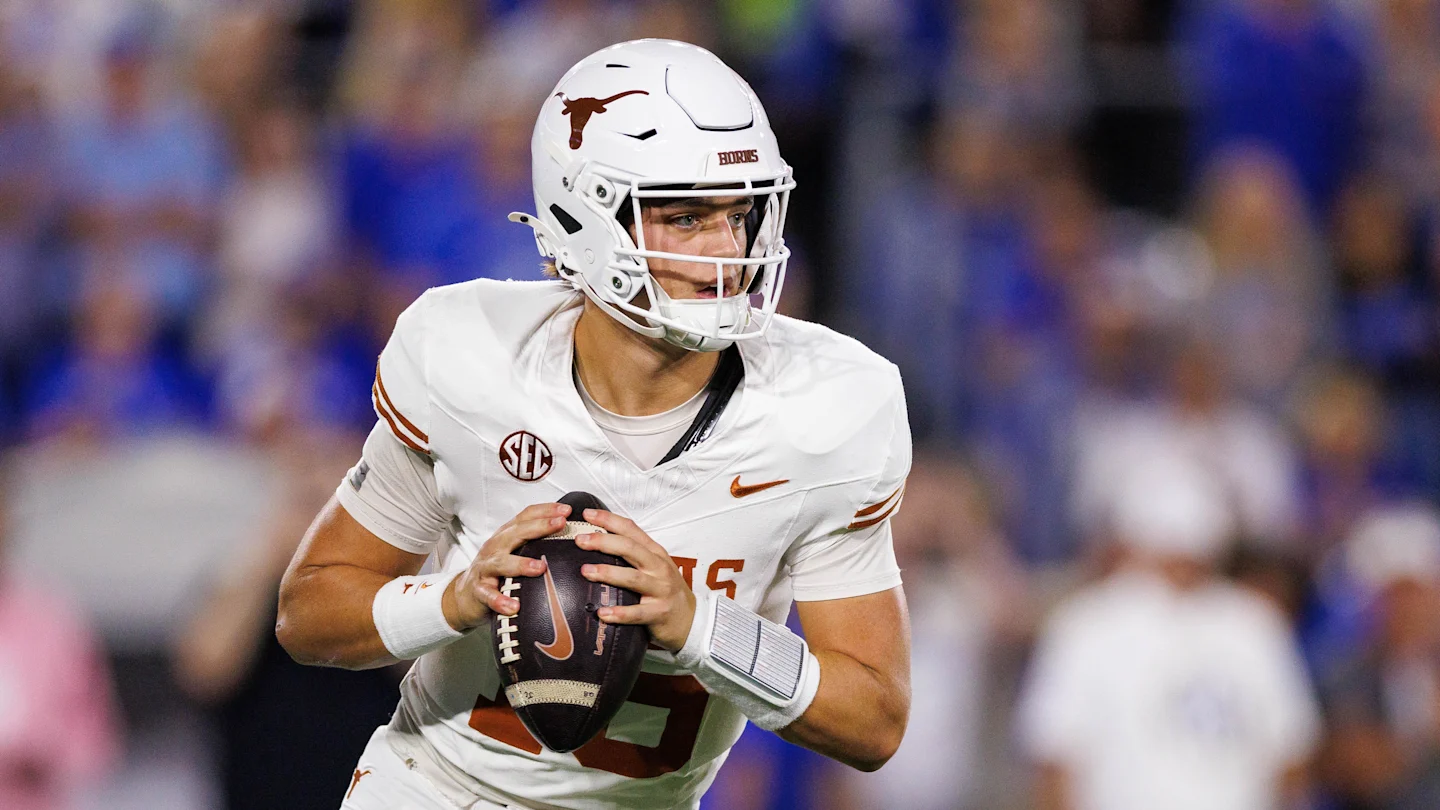
As the college football calendar winds down, Texas’ quarterback situation has become a national story.
Arch Manning finished the 2025 regular season with 2,942 passing yards, 24 touchdowns and seven interceptions, while rushing for 244 yards, eight rushing TDs and posting a 145.8 passer rating.
These numbers helped Texas reach a 9-3 regular-season mark (6-2 SEC) and a No. 13 ranking going into bowl season.
Manning’s sustained performance has positioned him as a credible 2026 NFL draft candidate, even as doubts persist about his readiness.
Monday’s PFF 2026 mock draft, in a writeup projecting the Pittsburgh Steelers at No. 19, explicitly assumed a scenario where “it’s feeling increasingly likely that Arch Manning … return[s] to school,” which pushed that mock to address other positional needs instead of quarterback.
That framing echoes multiple recent takes suggesting Manning is as likely to stay in Austin for 2026 as he is to jump to the NFL.

Manning arrived at Texas as one of the most hyped recruits in recent history: a five-star, consensus No. 1 quarterback in the 2023 class out of Isidore Newman (New Orleans) with five-star ratings across the major services.
He carried a pedigree and a polished high school resume (over 9,700 total yards and 140 total TDs) that fueled early NFL and media projections long before he even logged a college start.
2025 was Manning’s first extended turn as Texas’ starter, and while he showed growth, he also displayed some inconsistency against top defenses.
Still, he remains the highest‑paid athlete in college sports, with an NIL valuation of $5.3 million, fueling debate over whether that lessens his motivation to leave school early.
Underclassmen are generally required to apply for special eligibility for the NFL Draft by mid‑January, with the league setting Jan. 15 as the standard deadline and allowing slight adjustments for players from earlier‑finished seasons or championship teams.
That timeline gives Manning and Texas several weeks after bowl play to consult agents, advisers and the NFL’s College Advisory Committee before a final call.
Read More at College Football HQ
- SEC quarterback enters transfer portal after college football season
- Star SEC running back enters transfer portal after College Football Playoff snub
- 7,000-yard college football quarterback enters transfer portal
- Major college football program declines bowl game after College Football Playoff snub
NIL
Michigan football recruiting: How NIL affected signing day drama
ANN ARBOR – National signing day has always been an opportunity for college coaches to celebrate a new wave of players entering their program.
But in the current name, image and likeness-driven landscape of NCAA football, signing day also is one of the most stressful days of the year for coaches.
This signing day was no different, with dozens of prospects in the 2026 class having a late change of heart about their college choices just before putting pen to paper to make their verbal commitments official.
Michigan and head coach Sherrone Moore weren’t immune to this year’s signing day chaos. The Wolverines had 28 commits entering last Wednesday, the start of the early signing window, but only signed 27 recruits after some late reshuffling in the class.
The drama began Wednesday morning when Mansfield (Texas) four-star receiver pledge Zion Robinson announced he was “postponing signing until further notice.”
According to 247Sports’ Mike Roach, Stanford made an aggressive NIL play for Robinson. The school, which has had five straight losing seasons, successfully flipped the top-200 prospect on Thursday.
Meanwhile, Mineral (Va.) Louisa County five-star running back Savion Hiter, the crown jewel of Michigan’s class, didn’t sign on Wednesday. The delay sparked intense speculation on fan message boards about Hiter’s status, but Michigan was able to seal the deal Thursday morning.
According to Rivals’ Steve Wiltfong, Hiter, the top-ranked running back in the country per the 247Sports Composite, didn’t sign Wednesday because of “minor contractual details.”
The signing period fireworks didn’t end there. Michigan also lost Irmo (S.C.) Dutch Fork four-star edge Julian Walker to South Carolina on Thursday as the top-100 recruit chose to play for his hometown school where his father is on staff, but Moore’s program countered with a major move of its own.
It flipped Cartersville (Ga.) four-star receiver Brady Marchese from Georgia, adding a new top-150 wideout to its 2026 recruiting haul.
Moore was asked during a news conference Monday how much NIL has impacted late flips on signing day.
“It’s definitely out there,” Moore said. “It’s definitely a thing. It’s something you can’t ignore and you have to have a plan for it, and you have to adapt to it, because, yeah, that’s part of it. You think you got somebody signed, and then somebody shoots out something (other schools offering more in the NIL space), or does something, and you’ve got it cemented of what you’ve all agreed to, and all those other things, all those other pieces that are part of college football now, but that’s just college football now. You’ve got to adjust and you’ve got to adapt.”
More than ever before, roster construction in college football is driven by NIL funding. Not only is it prevalent in recruiting high school prospects, but also players in the transfer portal and retaining players on the current roster.
The biggest difference between high school recruiting and the portal is the timelines. Prep prospects can commit to a school at any time, but that verbal pledge doesn’t become binding until the player signs with the school. For example, Robinson and Walker were both committed to Michigan since last summer before flipping. Marchese was pledged to Georgia since March.
The portal is a more condensed timeline. The two-week window opens Jan. 2, and prospects usually try and find a new home quickly so they can enroll at their new schools in time for the start of a fresh semester.
Moore said Michigan is prepared.
“The big thing about the portal is not only getting the right fit, but the relationship,” he said. “Obviously, the right player, but people that fit the program, the people that fit the culture, the people that fit involved in the program. You’ve got to be ready. We’re on it. We’ve been on it. You’ve got to stay on it.
“You’ve got to have lists ready to go. Obviously, you can’t talk to the kids until they get in it. So, we’ve got to do everything we can to be prepared for that. From a financial basis, all that is a piece of it, right? We’ve got to make sure we’ve got a plan for all of it, and we do.”
NIL
Gopher Football’s Top NIL Earners Revealed
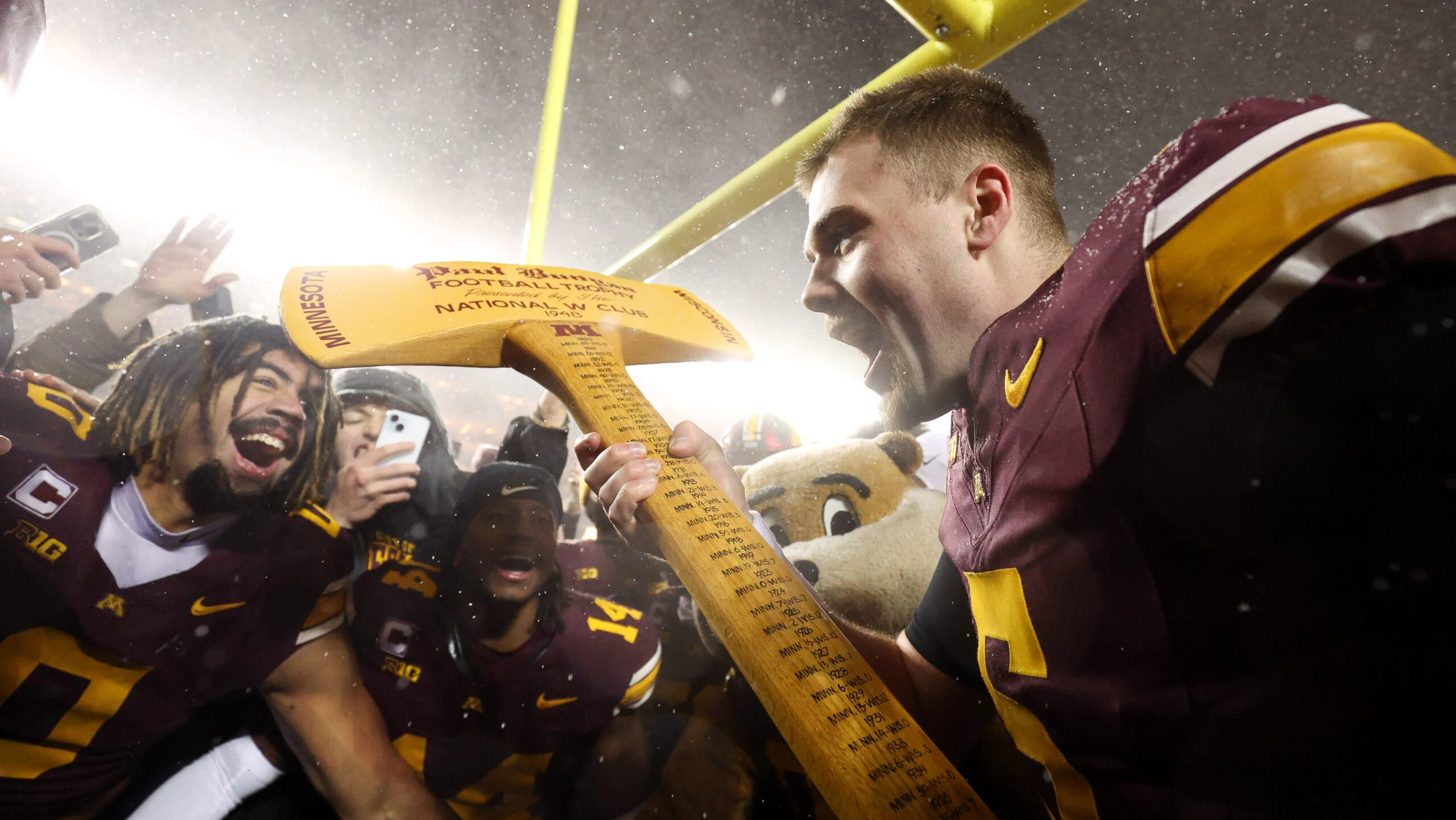

2025 was a disappoint season for the Minnesota Gophers. P.J. Fleck was starting a redshirt freshman quarterback, but heading into the season there was legitimate hope this team could win nine or ten games.
Not only did they win just seven, but Fleck got embarrassed by Iowa in his ninth season on the job, and they didn’t perform well against Northwestern, either. Minnesota is headed to the Rate Bowl against New Mexico in Phoenix, but the page needs to be flipped to 2026.
If the Gophers are going to be better next year, it will be because Drake Lindsey, Koi Perich, and Darius Taylor contribute in a big way. They aren’t going to be cheap to keep around, either, as the transfer portal will soon heat up.
MN Gophers spending big on key roster talent
The college sports landscape has changed amidst the introduction of NIL spending. Roster creating, especially in revenue generating sports, is not simply a byproduct of recruiting anymore. Dollars are attached to expectations, and Charley Walters revealed the substantial amount Minnesota will need to pay their stars.
It is expected to cost the Gophers at least $1 million to retain redshirt QB Drake Lindsey for his sophomore season next year. That would make him and 2016 junior defensive back Koi Perich at least a $2 million duo. Add Darius Taylor and the cost could exceed $3 million for trio.
Charley Walters – Pioneer Press
Drake Lindsey hardly set the world on fire this season. He completed 63.2% of his passes, with 16 touchdowns and 6 interceptions. At times, he looked every bit of a redshirt freshman. However, he also showed off his special arm talent, and there’s clearly a path for development.
Needing to pay a guy like Lindsey seven figures to retain his services is indicative of what college football has become, way too expensive… Minnesota will likely pony up for the Arkansas native who has always had a soft spot in his heart for the home state Razorbacks. It’s also probably helpful that his mentor, Vikings QB Max Brosmer is still in town.
Perich earned a hefty jump in NIL funds after leading the Big Ten in interceptions as a true freshman. The Minnesota native was nowhere near as noticeable this year, but he did record his first pick six. It seems logical he’ll be back, but the number will only increase.
Of the trio, Darius Taylor would seem to be the most expendable. An extremely talented running back, but rarely can be counted upon to remain on the field. Taylor played in just nine games for the Gophers while nursing a hamstring injury, and someone else paying for him to be injured on their sideline wouldn’t be the worst outcome.
Attendance still an issue for Minnesota Gophers
P.J. Fleck has the best recruiting class in history for the Minnesota Gophers for 2026. He held onto that talent despite the 7-5 record, but he’ll need to do much better in order to generate additional interest in the program. Walters added this about attendance for the Gophers:
Meanwhile, Gophers football attendance has decreased for a second straight season, averaging 46,519 for its seven games this year in 50,085-capacity Huntington Bank Stadium. The Gophers’ highest attendance average in history was 62,954 in 1957 at Memorial Stadium. The Metrodome years topped out at 60,985 in 1985; and the Huntington Bank Stadium high is 52,355 in 2015. During Fleck’s nine seasons at Minnesota, home attendance — excluding the abbreviated COVID 2020 season — has averaged 45,257.
Pioneer Press
When things are good at Huntington Bank Stadium, they can be really good. The problem is that Fleck has largely failed to sustain consistency. It might have seemed odd to storm the field after beating Nebraska, but it could have held more weight if the season trended in a positive direction.
At some point Fleck needs to reach a new level. He is 6-0 in bowl games at Minnesota, but has won less than nine games each of the past three seasons. An outlier 11-2 season with Tanner Morgan in 2019 is the high-water mark, and he’s shown zero semblance of returning to those heights since.
More About: Minnesota Gophers Football
Add MinnesotaSportsFan as a preferred source on Google.![]()
NIL
Joel Klatt names college football powerhouse making a ‘big mistake’
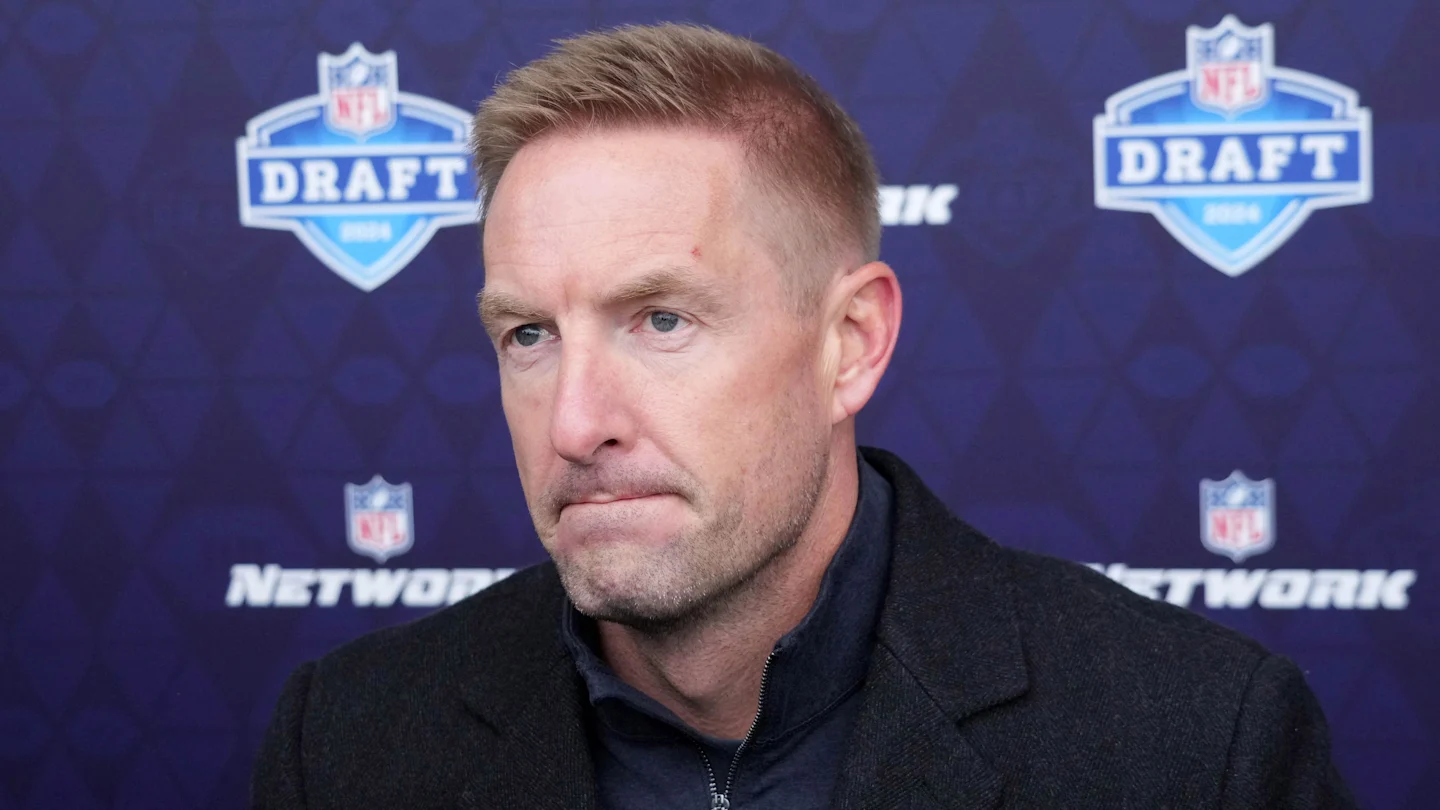
The College Football Playoff selection committee delivered a stunning blow to a prominent 10-win program on Sunday by excluding the team from the 12-team field. In response to the snub, the university announced it would decline any bowl invitation and end its season immediately.
This unprecedented move by the athletic director and head coach has drawn sharp criticism from national media figures. The leadership group felt the playoff spot was stolen after weeks of being ranked safely inside the bracket, leading them to opt out rather than play in a consolation game.
Notre Dame was positioned at No. 11 in previous rankings but fell out of the bracket in favor of the Miami Hurricanes. The Fighting Irish subsequently withdrew from the postseason, a choice that has sparked a significant debate regarding the culture of the sport.
Joel Klatt Labels The Decision A Big Mistake
Fox Sports college football analyst Joel Klatt addressed the controversy on The Joel Klatt Show, labeling the decision a significant error in judgment. Klatt argued that bypassing the postseason is an emotional reaction that negatively impacts the roster’s development. While the frustration in South Bend is palpable following the committee’s decision, the analyst believes the historic program is mishandling the situation.
Klatt outlined three primary concerns regarding the choice to pack up for the year. His first point focused on competitive development. Bowl preparation typically offers teams 15 extra practices, which are crucial for younger players. Klatt questioned how forfeiting this time helps the team prepare for the 2026 campaign.
“Bowl practice is where you develop for the next season,” Klatt said. “So, I don’t understand how just saying like, ‘No, we’re done with that,’ helps you for next year.”

The analyst also suggested the move appeared rooted in bitterness toward the selection process and the network broadcasting the games. He noted that the decision feels “petty” if it is based on anger regarding the weekly rankings reveal. Klatt emphasized that a program with such high stature should rise above such feelings.
“I think that that decision was born out of an emotional reaction rather than a disciplined response,” Klatt said. “And those two things are very different.”
Finally, Klatt directed a message to the athletes who may have played their final down of football. He warned that players might look back on this choice with regret. He stressed that athletes have a finite number of opportunities to compete at the highest level and should not artificially create a finish line.

Klatt also criticized the leadership strategy behind the choice. He compared the situation to parenting, noting that adults should intervene when young people react out of hurt feelings. He argued that leaders must prioritize logic over immediate emotional responses. ESPN analyst Paul Finebaum also took aim at the Irish fan base for their reaction to being left out of the playoff.
“I wouldn’t have asked the players what they wanted to do because they feel hurt,” Klatt said. “You don’t want to respond with your emotions. You want to respond with your reason and logic.”
Read more on College Football HQ
-

 Rec Sports2 weeks ago
Rec Sports2 weeks agoFirst Tee Winter Registration is open
-

 Rec Sports2 weeks ago
Rec Sports2 weeks agoFargo girl, 13, dies after collapsing during school basketball game – Grand Forks Herald
-

 Motorsports2 weeks ago
Motorsports2 weeks agoCPG Brands Like Allegra Are Betting on F1 for the First Time
-
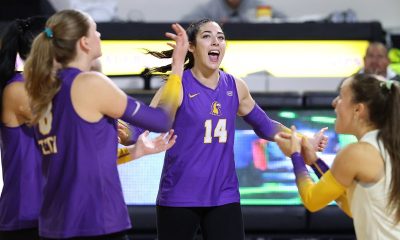
 Sports3 weeks ago
Sports3 weeks agoVolleyball Recaps – November 18
-

 Motorsports2 weeks ago
Motorsports2 weeks agoF1 Las Vegas: Verstappen win, Norris and Piastri DQ tighten 2025 title fight
-

 Sports2 weeks ago
Sports2 weeks agoTwo Pro Volleyball Leagues Serve Up Plans for Minnesota Teams
-

 Sports2 weeks ago
Sports2 weeks agoUtah State Announces 2025-26 Indoor Track & Field Schedule
-

 Sports2 weeks ago
Sports2 weeks agoSycamores unveil 2026 track and field schedule
-

 Motorsports2 weeks ago
Motorsports2 weeks agoRedemption Means First Pro Stock World Championship for Dallas Glenn
-

 Sports2 weeks ago
Sports2 weeks agoTexas volleyball vs Kentucky game score: Live SEC tournament updates
















